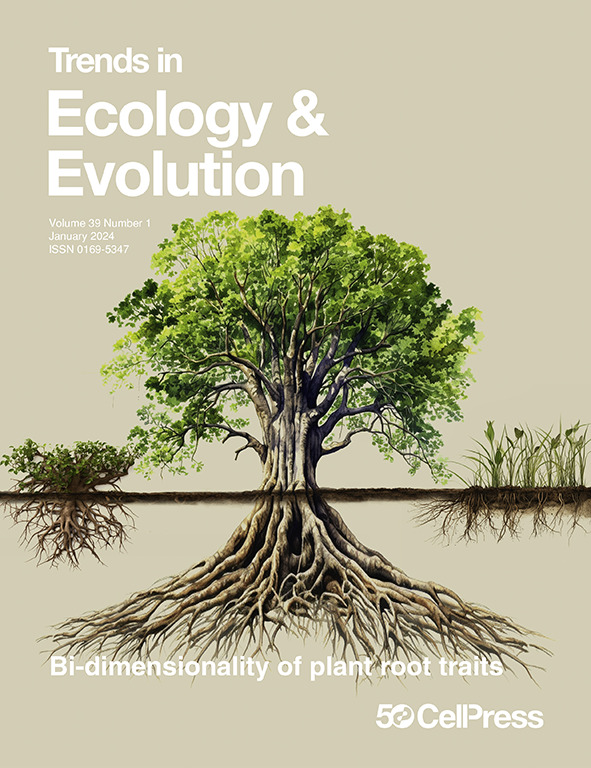Reimagining species on the move across space and time.
IF 17.3
1区 生物学
Q1 ECOLOGY
Trends in ecology & evolution
Pub Date : 2025-07-01
Epub Date: 2025-05-08
DOI:10.1016/j.tree.2025.03.015
引用次数: 0
Abstract
Climate change is already leaving a broad footprint of impacts on biodiversity, from an individual caterpillar emerging earlier in spring to dominant plant communities migrating poleward. Despite the various modes of how species are on the move, we primarily document shifting species along only one gradient (e.g., latitude or phenology) and along one dimension (space or time). In this opinion article we present a unifying framework for integrating the study of species on the move over space and time and from micro to macro scales. Future conservation planning and natural resource management will depend on our ability to use this framework to improve understanding, attribution, and prediction of species on the move.
重新想象穿越时空的物种。
气候变化已经对生物多样性产生了广泛的影响,从一只毛毛虫在春天早些时候出现到主要的植物群落向极地迁移。尽管物种的移动方式多种多样,但我们主要记录了物种沿着一个梯度(如纬度或物候)和一个维度(空间或时间)移动。在这篇观点文章中,我们提出了一个统一的框架来整合物种在空间和时间上的移动,从微观到宏观尺度的研究。未来的保护规划和自然资源管理将取决于我们利用这一框架来提高对迁徙物种的理解、归因和预测的能力。
本文章由计算机程序翻译,如有差异,请以英文原文为准。
求助全文
约1分钟内获得全文
求助全文
来源期刊

Trends in ecology & evolution
生物-进化生物学
CiteScore
26.50
自引率
3.00%
发文量
178
审稿时长
6-12 weeks
期刊介绍:
Trends in Ecology & Evolution (TREE) is a comprehensive journal featuring polished, concise, and readable reviews, opinions, and letters in all areas of ecology and evolutionary science. Catering to researchers, lecturers, teachers, field workers, and students, it serves as a valuable source of information. The journal keeps scientists informed about new developments and ideas across the spectrum of ecology and evolutionary biology, spanning from pure to applied and molecular to global perspectives. In the face of global environmental change, Trends in Ecology & Evolution plays a crucial role in covering all significant issues concerning organisms and their environments, making it a major forum for life scientists.
 求助内容:
求助内容: 应助结果提醒方式:
应助结果提醒方式:


